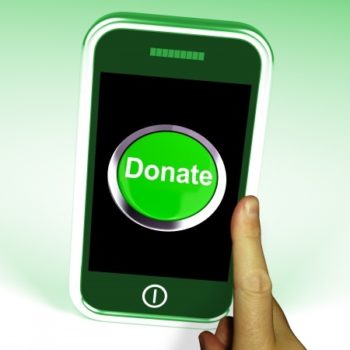Like it or not, the world’s gone mobile. People have their smartphones with them everywhere they go; they research purchases before buying; they click to purchase from wherever they are. By 2015, experts say the mobile industry should account for as much as $1 trillion in worldwide transactions, according to Heavy Reading’s Mobile Networks Insider newsletter. (Read here.)
But here’s what’s surprising: despite the general popularity of mobile payments, for many nonprofits, the idea still feels like a foreign one. Why are so many nonprofit organizations still avoiding the mobile payment realm? What keeps charities and religious organizations from adding mobile payment options for their donors? Let’s take a look.
To help answer these questions, here are some of the top excuses nonprofits use to skip mobile payment processing:
1. Worries about security with mobile payments
Any place where personal information and financial data are involved is a place where concerns about security will come up. Consumers and nonprofit associations alike wonder how safe their data will be when it’s sent across mobile networks. Will hackers be able to steal a person’s identity after he buys something on his phone? Will credit card fraud occur as a result?
The very threat of these types of security breaches keeps many nonprofits from trying mobile payments. But here’s the truth: “Despite fears on the security of mobile payments, when you look at the bigger picture, mobile payments are inherently more secure than your wallet,” says Ilan Oosting at Mobile Payments Today. “The security features of today’s mobile phones, in addition to the security measures employed on payment apps themselves, may not be impenetrable but should give you enough time to call your bank and cancel all transactions on a certain device.” What’s more, for nonprofits looking to verify security, here are a few tips to keep in mind:
– Look for two-factor authentication: A mobile donation method is doubly secure when a consumer has both a phone password and an app password. Encourage your donors and members to protect themselves with two-factor authentication.
– Issue immediate electronic receipts: Donors gain confidence in mobile transactions when they receive immediate confirmation that a donation has occurred. Use electronic receipts to give them a fast, convenient way to verify accuracy and dispute any concerns.
– Choose a mobile provider with encryption: Before choosing a provider, carefully examine its security measures and protections. Reputable donation processing companies will offer SSL (also known as HTTPS) encryption.
2. Confusion about the process
While mobile payments are popular and ever growing, they are still new and sometimes misunderstood. Many people know Apple doesn’t allow in-app donations, so they might think mobile donations aren’t possible, when in fact they certainly are. For this reason, for many nonprofits, the idea of taking mobile donations still seems confusing.
How does it work? How do you get started? What do you need to do? Intimidated by the mobile concept, some charities avoid the process completely. But today, taking mobile donations is easier than ever – simply contact an established processing company to get started.
3. Doubt about the benefits
Even nonprofits that aren’t intimidated by the idea of mobile donations might skip them because of this: they don’t see the point. Why fix what isn’t broken, some might think. Do mobile donations make that much of a difference? What they don’t realize, however, is that giving your donors a way to give money on their phones gives your nonprofit a way to accept payments more easily. Here are some of the benefits that come from mobile donation options:
– Convenience for donors: As of October 2013 60.8% of Americans own a smartphone, and 34% own a tablet. Your donors and potential donors are on the mobile web, so why not meet them there?
– Immediate donations: Simply from a logistics standpoint, mobile payments make sense. A simple swipe or click can send money, without any of the additional organizing, depositing, and other steps.
– Keeping up with the charitable world: As more and more businesses move toward mobile payments, it’s only natural that nonprofits follow. When other charities make it easy and convenient for donors to give, but you don’t, you harm your own brand.
Does your nonprofit already accept donations on mobile devices? Why or why not? If you want to keep up with the times, you need to get on board. Don’t let the common excuses outlined in this article stop you.
Author:
Kristen Gramigna is Chief Marketing Officer for BluePay, offering non-profit credit card processing solutions. She brings more than 15 years of experience in the bankcard industry in direct sales, sales management, and marketing to the company and also serves on its Board of Directors.

